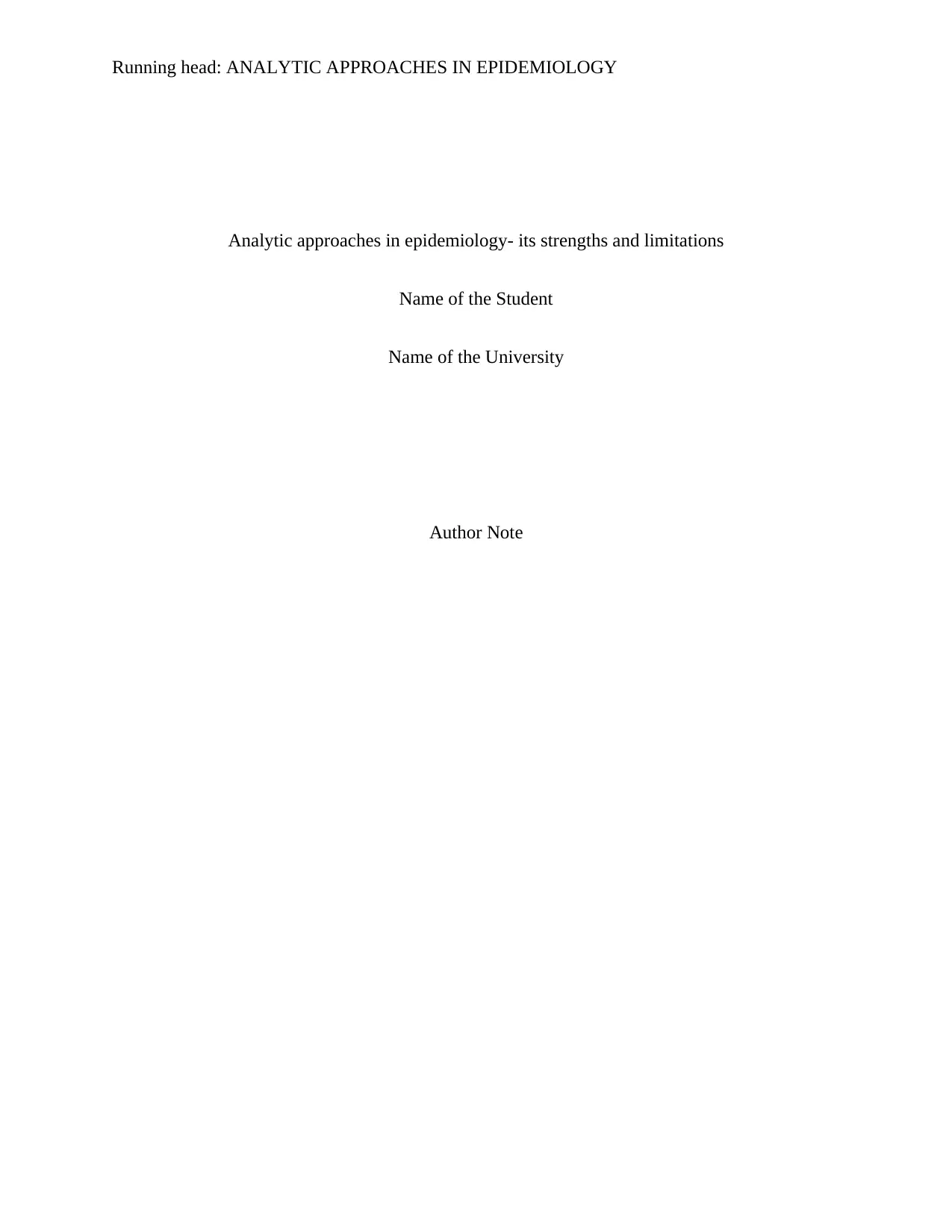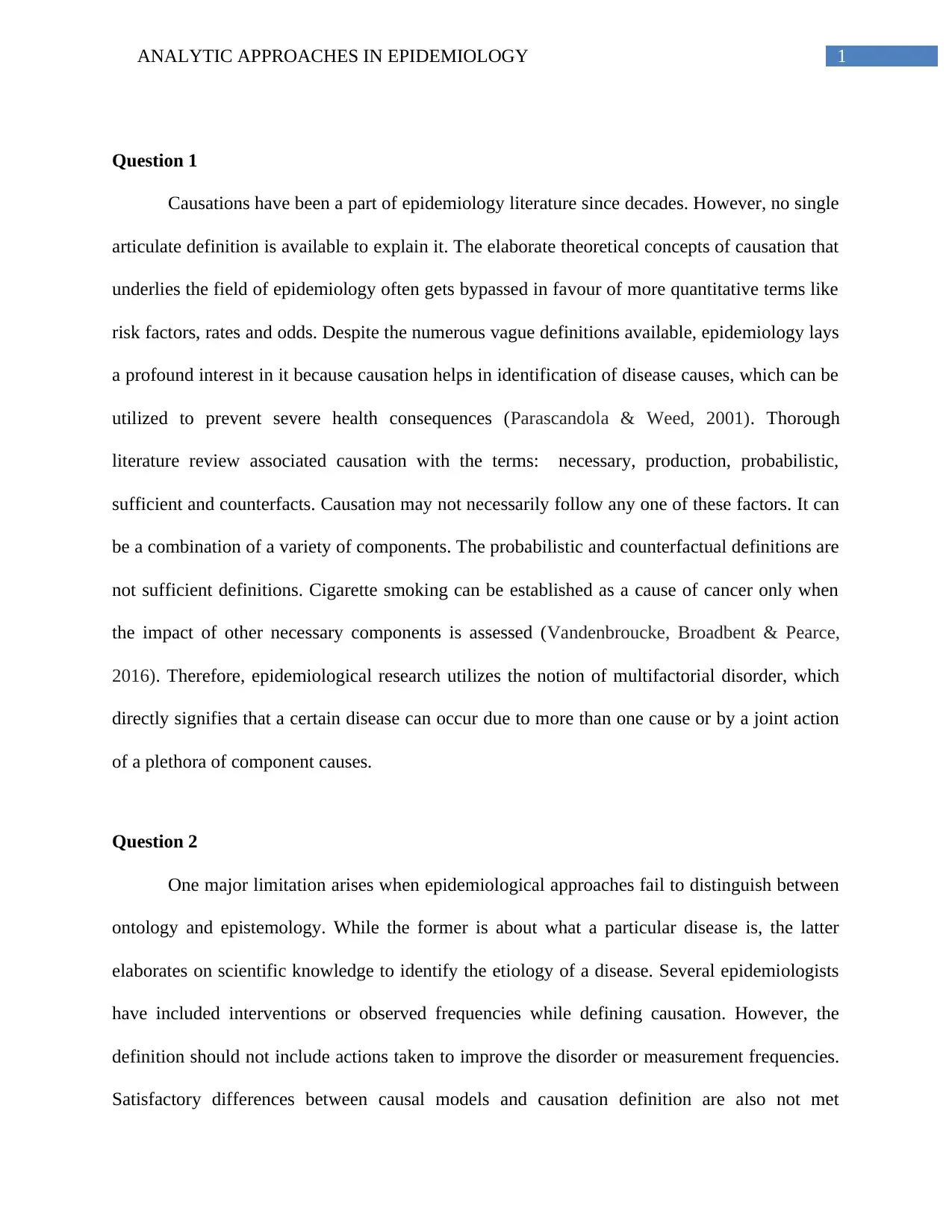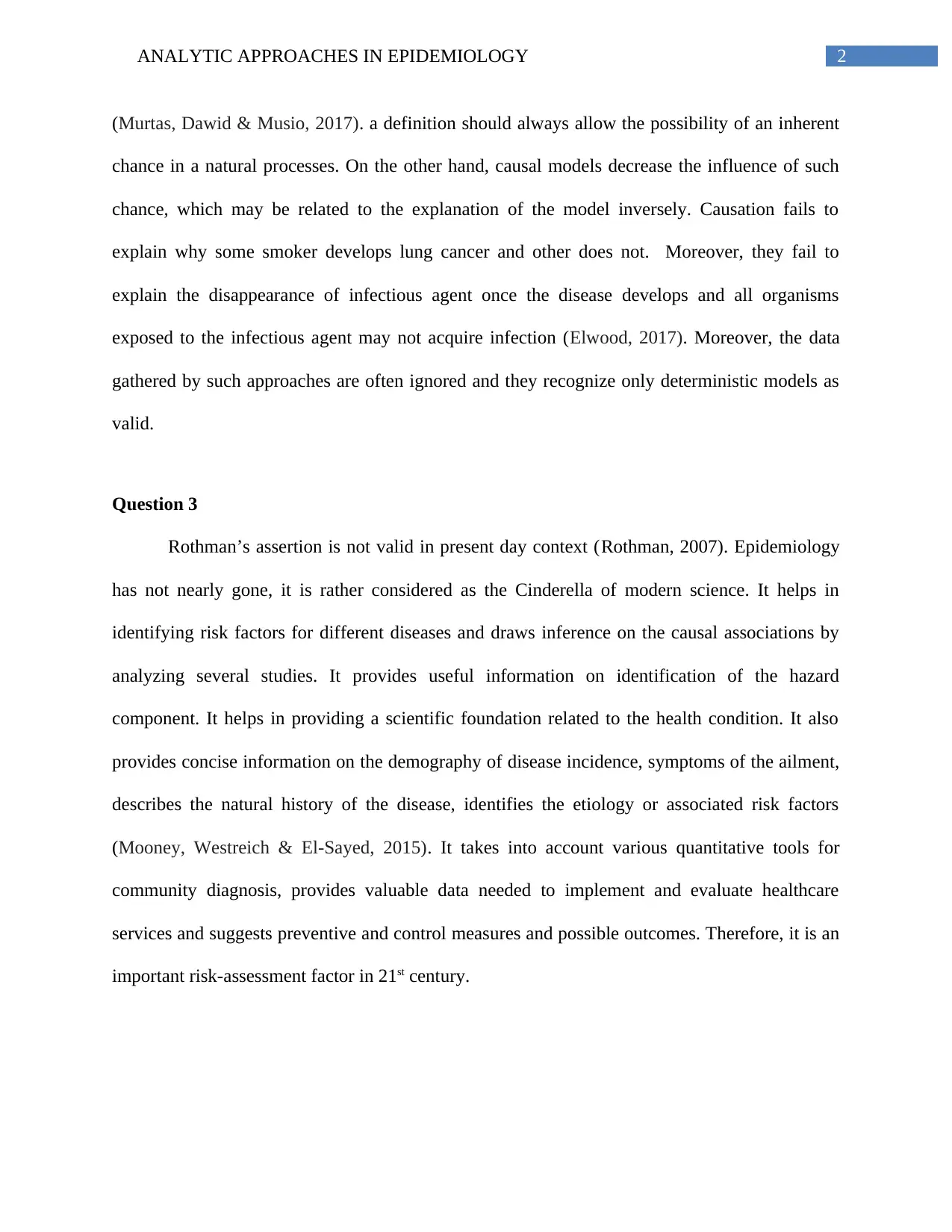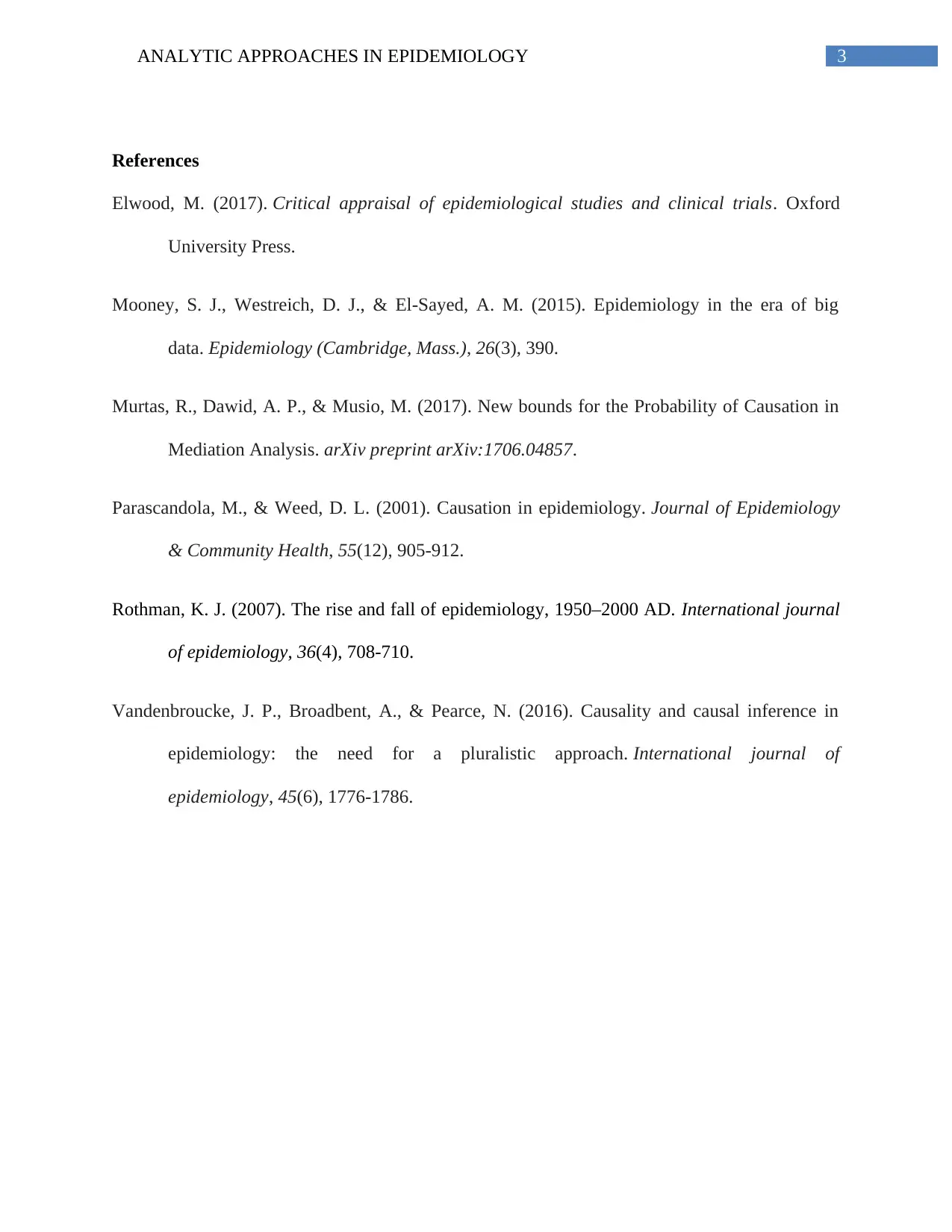Analytic Approaches in Epidemiology: Strengths & Limitations Report
VerifiedAdded on 2020/02/24
|4
|812
|207
Report
AI Summary
This report delves into analytic approaches in epidemiology, addressing the complexities of causation, the limitations of current methodologies, and the relevance of epidemiological studies. It begins by exploring the concept of causation, examining various definitions such as necessary, sufficient, and probabilistic factors, and highlighting the challenges in establishing causal relationships. The report then identifies limitations in epidemiological approaches, such as the failure to distinguish between ontology and epistemology, and the inadequacy of causal models. Finally, it evaluates the validity of Rothman's assertion regarding the decline of epidemiology, arguing that epidemiology remains a vital field in identifying risk factors, drawing causal inferences, and providing a scientific foundation for public health interventions. The report emphasizes the importance of epidemiology in community diagnosis, healthcare evaluation, and the development of preventive measures.
1 out of 4






![[object Object]](/_next/static/media/star-bottom.7253800d.svg)